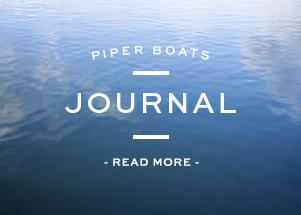– Pipers everywhere, and where to get a steak! –
Roger and Alison, DB Iron Lady (not a Piper!) came to lunch aboard EssDeeAy (the red ‘Simon’!) on New Year’s Eve. We were at the Brussels Royal Yacht Club, wintering, as usual. There was snow on the pontoon. They had travelled for 2 hours by train from their winter berth in Diksmuide, near Nieuwpoort in Belgium – a place we knew nothing about. “Its lovely there”, she said, “and we’ve had no snow this year”.
We had met up with them for the first time in Nieuwegein, in the Netherlands, earlier in the year. They had wintered the previous year in Berlin, with large blocks of ice pressing against their hull. Heading on into Belgium, they had asked us for information about moorings and routes, which we gladly gave them. Now they were back with us again.
We’d not been to Diksmuide, didn’t know where it was, but thought it might be a good start to this year’s cruising. We set off from Brussels on March 3rd, two Pipers in company. Tula (Ivan and Vincianne) left at the same time. Both barges had spent the winter in the Brussels Royal Yacht Club; it was our 8th year there. We were now heading north and then west. Tula was going north with us, and then east. Our first stop was Klein Willebroek, two hours of gentle travel, with one lock. Here we spent a couple of nights and waited for the tide in the river. Then we would head west for Ghent, as Tula went east to Antwerp
Timing is everything, especially on a fast flowing tidal river. We had spent hours with charts and the tide atlas working out the best time to go. We settled on an hour before low water, so that we could carry the flooding stream with us.
It went wrong almost immediately. We got through the lock into the river an hour earlier than we planned. When the lock-keeper says “come through now”, it is inadvisable to say no, so off we went. We had a 2-3kph current against us, but we had 7kph over the ground (1600rpm), and with 60km to go, plus the flooding tide to come behind us, we expected to arrive in Ghent in perhaps 5 hours.
The river meanders, of course, so as everyone knows, you have to keep to the outside of the bends. No problem, we thought, but of course this is more difficult at low water. We kept watching the GPS, and the depth gauge, trudging onwards, and hoping to see the tide turn with us. Suddenly, the boat shuddered, and slowed – Sint Amands is a double twist, first left then right over a couple of kilometres, and it is very shallow even at high water. With shrieks from one of our crew in my ears (“we’re aground!!! we’re aground!!!”), I pushed the throttle a bit and off we set again. “Must the tide starting to join us”, I explained (ahem!).
But it didn’t. We pushed on and on, 7kph on the instruments, no sign of the tide, as the early sunset approached. We finally got to the lock at 6pm, after 8 hours on the move, and were told to wait until a commercial joined us. We waited as the sky started to darken. Free an hour later, we completed the journey in the dark, tying up to another barge in the centre of Ghent at 9pm. Remind me to court martial our miscalculating Pilot!
During out stay in Ghent, we had dinner aboard DB Inevitable (XXX), and went to see the famous Ghent Alter Piece – beautiful colours, and brilliant craftsmanship, but the ridiculous superstitious imagery! Then it was time to move on again. We had a lovely run towards Bruges, stopping just outside at Oostkamp (free mooring, no facilities, but shops nearby). There is a memorial here to the Canadians who died storming the canal in 1945.
Then we faced the run through Bruges, and the infamous Nieuwdammepoortsluis. This is a round lock, the bollards are too far back to throw a line on, and the only available attachment is to a ladder. This came away from the wall last time we were here. But, miracle of miracles, they have made extensive improvements, with new concrete sides, and they’ve moved the bollards closer to the edge. A young man took our lines with the usual greeting – “Ah English, the first this year!”
So the passage of Bruges is now as described in the tourist literature – fabulous. We chatted with the lock man, who asked us if we liked his new lock. “Yes” we chorused. “Commercial skippers do not like it so much “ he told us. There was a long discussion of single malt whiskeys (why? Maybe as I’m Irish?), and we gave him a small bottle of a 12-year old Tullamore as a thank you for all his new concrete!
We had a lovely run to Jabbeke, a free mooring with coin-operated power and water. It is opposite a lovely restaurant called Ter Spinde, which specialises in indoor barbeques. My steak would have fed a football team (J. Clarkson please note!), and Anne’s prawns came hanging from a spit, all barbequed on an open wood fire!
After a quiet weekend (its strictly a 24hr mooring, but its early enough in the season!), we headed on towards Ostend. Turning sharp left, we enter the Plassendalesluis, which is normally left open. This time it was closed, with gangs of yellow-jacketed workers toiling at some maintenance task. “You are for the Oudenburg mooring?”, one shouts. Of course, we said. “It’s usually just a 24hr mooring, but stay as long as you want, since you have paid enough for your vignette!”. Nice, we thought, as we watched the crew winding windlasses to open the lock gates for us – an almost medieval sight.
So we stayed a week! Oudenburg is one of our favourite moorings in the whole of Europe – a free pontoon, with free electric and free water. The town is 15 minutes away for supplies. It is quiet, and peaceful. We watched the eclipse on the BBC sitting here. The sunsets through the trees are stunning, and across the open countryside we saw the flash of the lighthouse on the pier at Ostend in the distance.
On Wednesday morning a crowd gathered at the road junction across from the mooring; then several police cars arrived. Could it be that our extended stay had been reported, and we were due for deportation? Then we heard a distant cheer, and two hundred professional cyclists raced past, within a few feet of the boat! The week passed too quickly, we actually thought about staying longer.
However, we had an appointment to keep, so Monday morning saw us slipping away from the mooring; there was a hint of a tear in the odd eye! We were delayed a few hours awaiting a bridge keeper to arrive from Nieuwpoort. A mastless yacht turned up. Then we set off in convoy. “What’s that noise?”, asks the Helm. Thinks. Yes, definitely, a rhythmic thumping. We try going backwards, still there. There is a travel hoist at Nieuwpoort; it has lifted us, and Tula, and Lucie, in turn. So a call to the VVW, then? Martin immediately suggests we call a diver, and kindly reserves a lift time for us in the morning in case we need it. We call the diver, we tell him where we are, and he says he will meet us after the lock ahead.
So bang on for an hour; the shaking of the prop shaft is incredible. Johnny and Mark meet us on arrival; two minutes later Mark is in the water. He pops up and signals for a knife. Minutes later he appears with a tow rope, the size of a hawser fit for the Queen Mary. “I have checked everything; your prop is like new, all the anodes are clean, and there is not a mark anywhere on the hull”, he says, as wide grins spread through the small crowd that had gathered.
Its 4pm. We have a dinner engagement. Its 2 hours away, up a river. But its non-tidal, and we’re past the Spring Equinox, so it stays brighter longer. So off we go again. The River Yser was the divide between the long lines of trenches in the First World War. The place is steeped in history, and we see the remains of fortifications and trenches in the fields as we pass along.
Roger and Alison are standing on the quay at Diksmuide when we finally arrive. We are given a mooring, on a long quay, beneath the major museum tower built to commemorate the war. Diksmuide is a nice town, there is a farmers market Saturdays, and a weekly produce market on Mondays. There are two brassieres/estaminets on either side of the bridge, and several supermarkets.
Parahandy (Brian Hewitt) is here too – the original Simon! He is due back from the UK shortly, and we want to hear the story of him coming back up the Rhone against the current, single-handed! We decide to have a party on EssDeeAy on Saturday night – the first party of the 2015 cruising season.
Over dinner, our hosts tell us of excursions by train and bus, and into France, and of museums and monuments. Ivan and Vincianne arrive from their home port of Antwerp (by car!). Brian is quiet blasé about his trip up the Rhone, and tells stories of drifting in the current as he rushes below to change a fuel filter clogged with the dreaded bug, or of loosing his shaft coupling in a big lock, and the VNF coming out and fixing it for free. After 20 years of cruising, narrow boat and barge, there is not a place we can name that he hasn’t been.
“When are you writing a book, Brian?” I propose. But he is not interested, as he is too busy enjoying himself. Brian is 84 years young!
The club here is very friendly; it is also very Flemish, as distinct from the French influences in Brussels. But perhaps we need a change, after 8 winters in Brussels. We have paid for a mooring for a month, as we have to go to the UK for Easter. Then we will recommence our summer wandering.
But what about the winter, then? French or Flemish? If you can help, we would be very grateful!
Joe & Anne
DB Essdeeay







